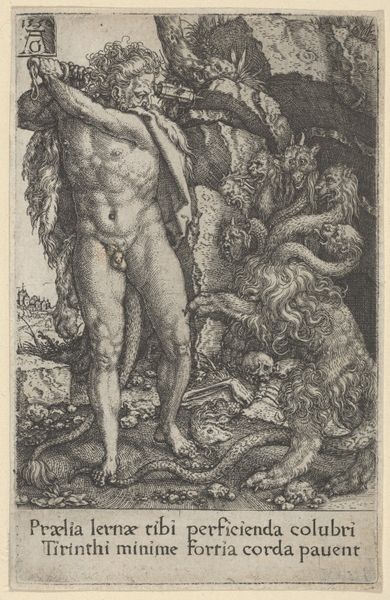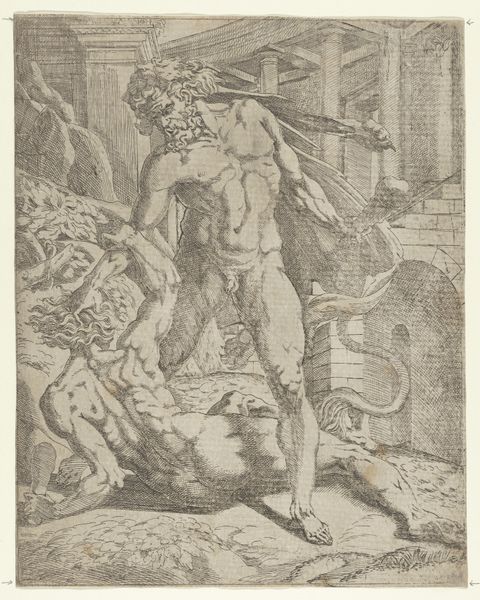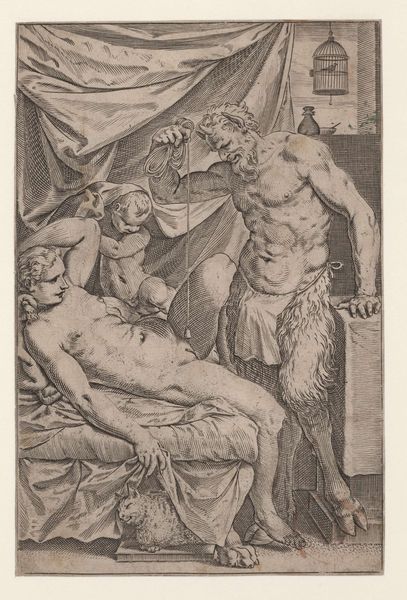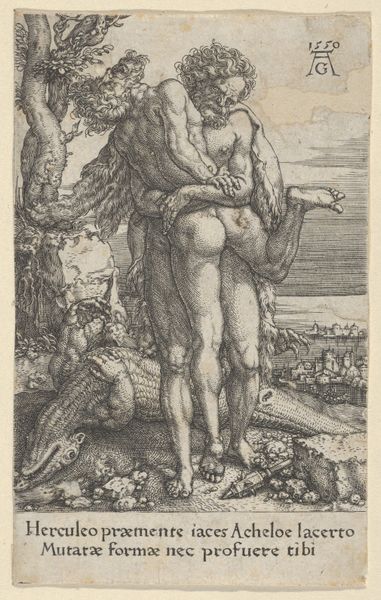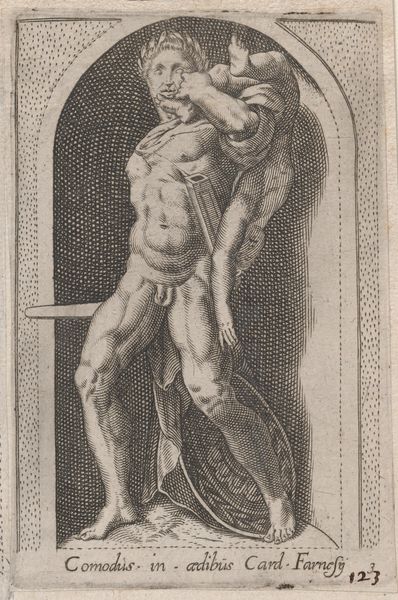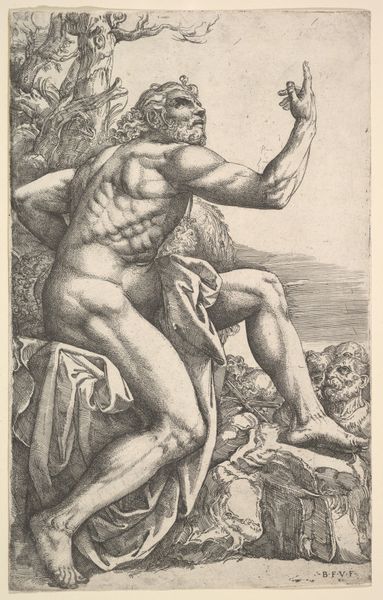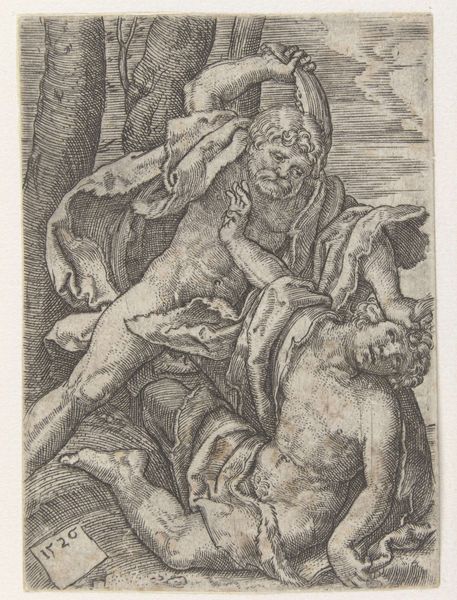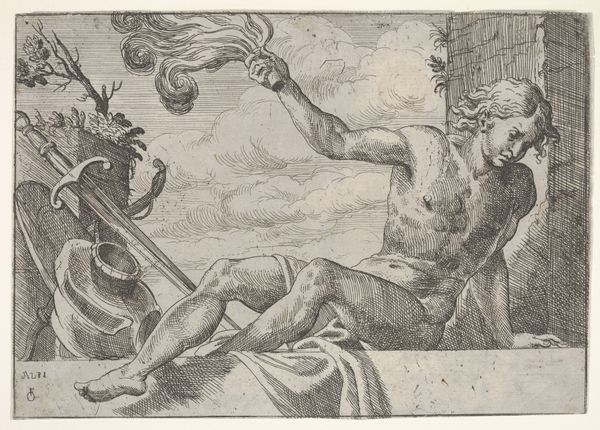
drawing, print, engraving
#
drawing
# print
#
figuration
#
history-painting
#
italian-renaissance
#
nude
#
engraving
Dimensions: 4 5/8 x 3 3/8 in. (11.8 x 8.6 cm)
Copyright: Public Domain
Curator: This engraving, likely from the early 16th century, presents David with the Head of Goliath. The work is attributed to Marcantonio Raimondi and resides here at the Met. Editor: The first thing that strikes me is the figure's almost burdened posture. He is youthful and the execution detailed, but his gaze doesn’t quite convey triumph, more a grim resignation. Curator: The composition reinforces that. Note the formal arrangement—the muscular tension, the contrapposto of his stance. David’s youthful beauty is rendered in impeccable detail. It embodies the Renaissance aesthetic of human perfection. Editor: That perfection, though, feels labored. It’s clear this is an engraving, a process involving intense physical skill. The cross-hatching defines not just form, but also a weighty, palpable materiality. Each line a deliberate act, accumulating into this dense, layered image. The sweat equity, the labour of it. That speaks loudly. Curator: Absolutely. And considering the historical context, Raimondi was a pivotal figure in disseminating Raphael’s designs through printmaking. The work extends the reach of that style and helps to promote ideals through repeated imagery. The semiotics are fascinating. Editor: It's striking how the production almost amplifies the violence of the original story, not just depicting a powerful image, but replicating and circulating this graphic violence, which would further spread both message and ideology. Curator: An astute observation, highlighting the distribution's role in art’s impact. David’s gesture of gripping the severed head is not merely an act of triumph, but also of possession, signifying dominance. The gaze down at the subject, and away from the observer. Editor: Exactly, and thinking of materials, that head, separated by the engraving process from a singular artistic vision and multiplied... Well, it introduces other meanings that emphasize art’s capacity to mold, and at times even brutalize society through material form. Curator: A potent reminder that art is not just about aesthetics; it is intrinsically intertwined with historical context. Thank you for bringing these socio-historical considerations to this interpretation. Editor: Thank you. Understanding the craft, the hands behind it, can certainly add more complex shades to the image's core narrative and resonate across periods.
Comments
No comments
Be the first to comment and join the conversation on the ultimate creative platform.


